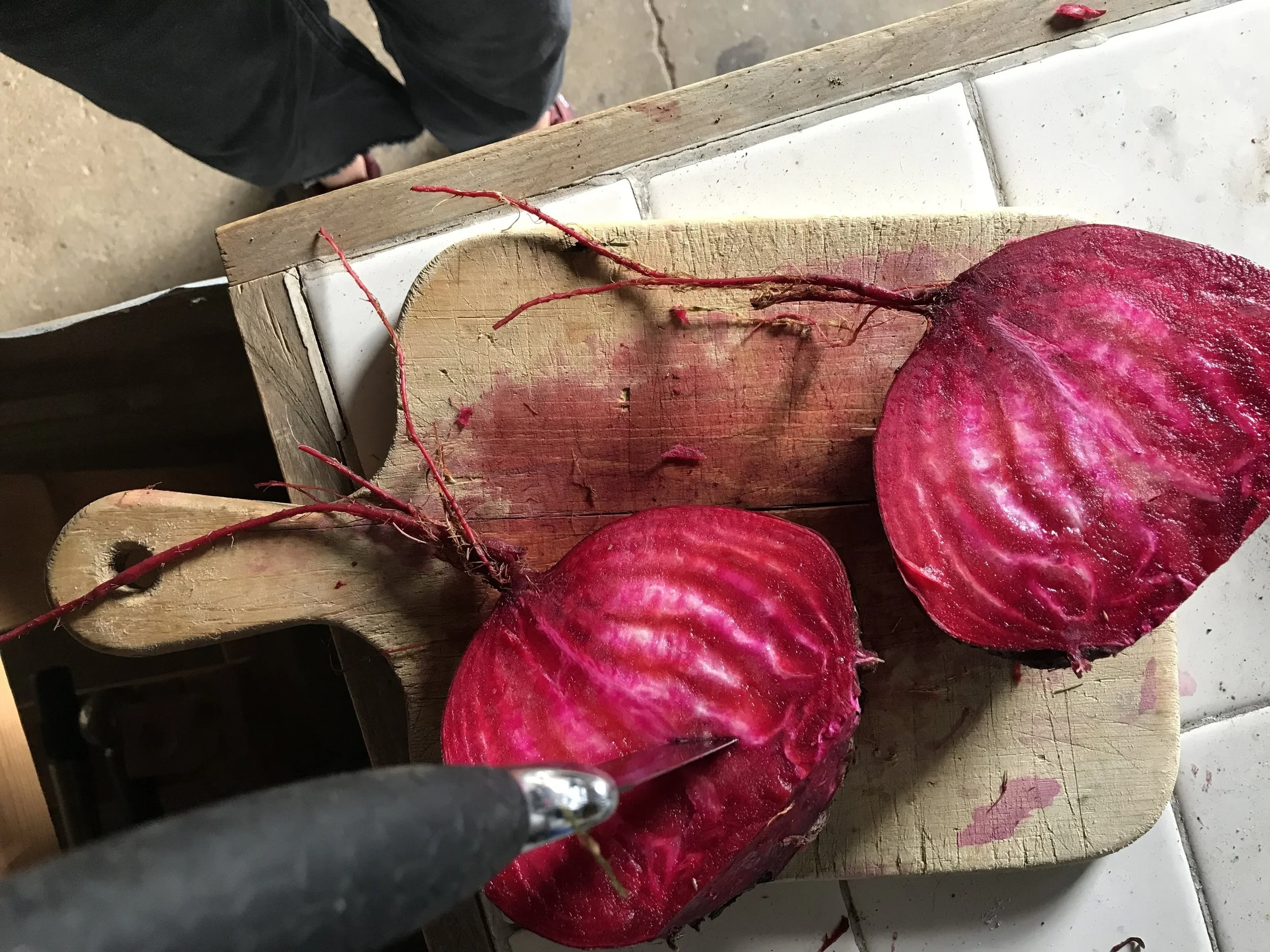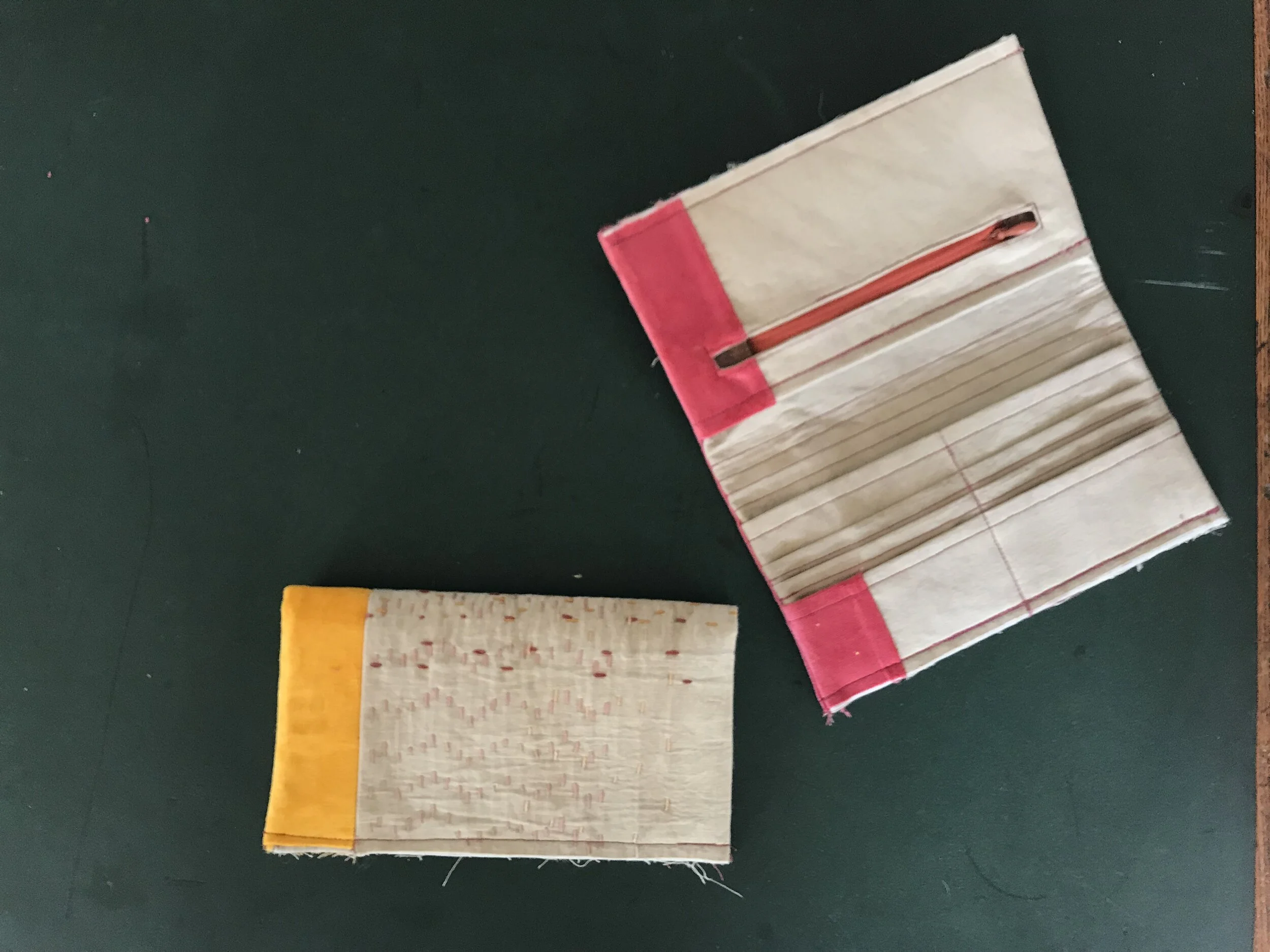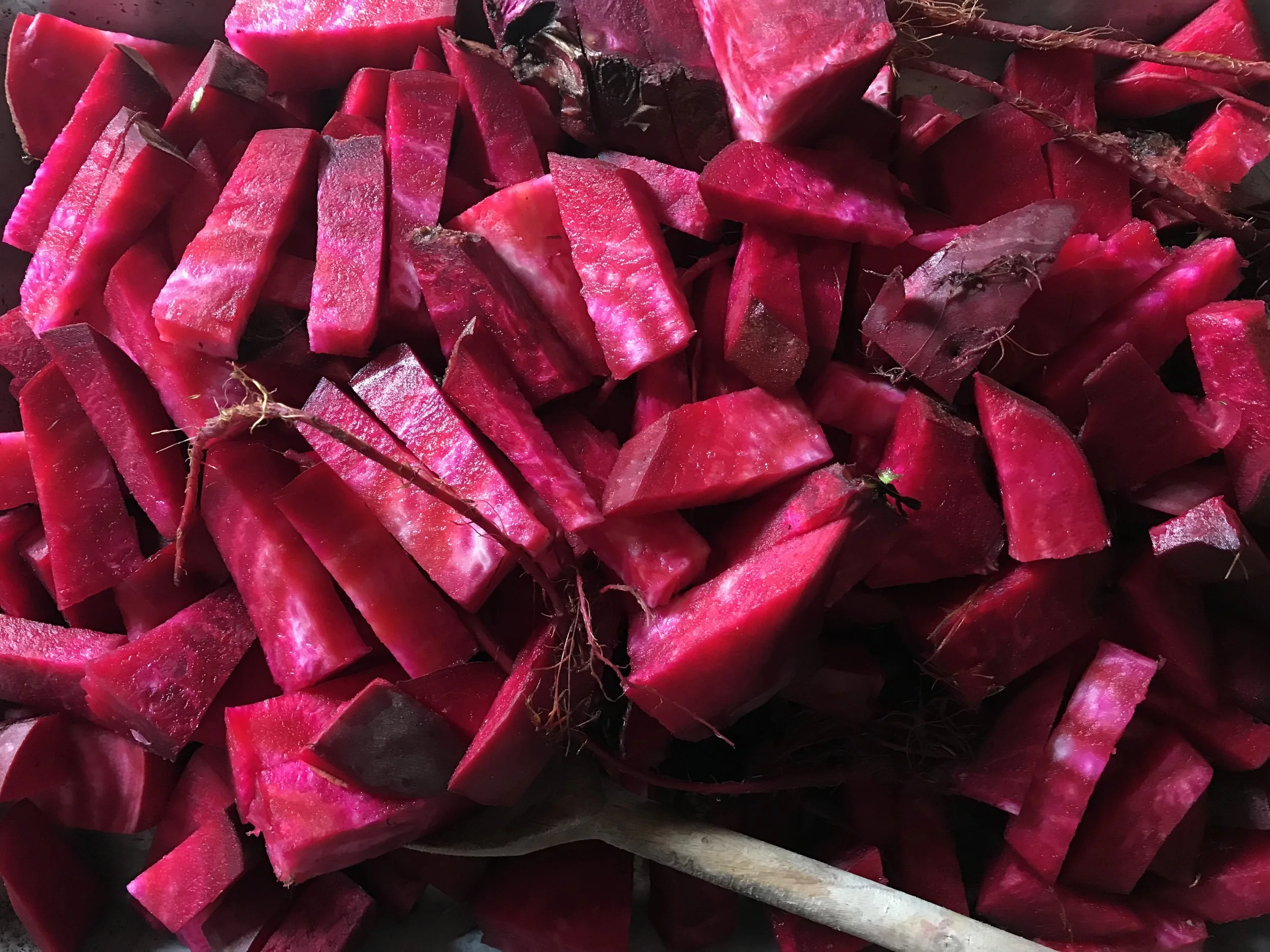Summer Rubies; naturally dyed & embellished clutches
Giant garden fresh beets,
too big to eat,
from the dirt to the juicer
I prefer juicing beets in preparation for natural
dye bath, so they can be used for both drinking &
dying. (and its messy, ill take any reason to dirty
&stain my hands) I learned that freshly cut &
chopped rhubarb leaves can be used as a natural
mordant, six large leaves were prepared then
added to the dye bath. Three yards of cotton
wound, bound & twisted tightly, a technique
known as SHIBORI, soaks in the beets bath for
twelve hours to create light variations in the
already dyed cotton.
Desert Peach Cotton from ruby red beets. Hand stitched and bound into cases for goodies and coins.
note: i've never dyed with beets or rhubarb, and was expecting for a richer color one more true to the
red or pink seen in beets; the cloth came out almost as toasted almond, with darker streaks striking
through the cloth from the shibori.
Once dyed, cleaned & dried, I cut the one yard into 8 x 9 inches rectangles; these pieces are for the
outside of the clutches. With cotton embroidery thread I stitch the fabric creating depth, texture &
greater variation for each clutch. I've always inspired by BORO CLOTH, a traditional Japanese
technique where textile scraps are stitched together creating a greater whole with rich patterning
formed by the color changes in the fabric layered with the stitching, and I looked for other types of
traditional techniques that could alter a fabrics identity. Used to reinforce & add beauty to fabric,
Japanese SASHIKO stitching amplifies the quality & life of a textile or product through tactility
alone.
*Please click on the very first image in the post for a great website source (if your not into books) that gives a
deeper look into traditional & historic Japanese techniques that were utilized in making these clutches. Shibori,
sashiko are amazing techniques to bring life back to a piece of fabric that you might need a reason to love again!


